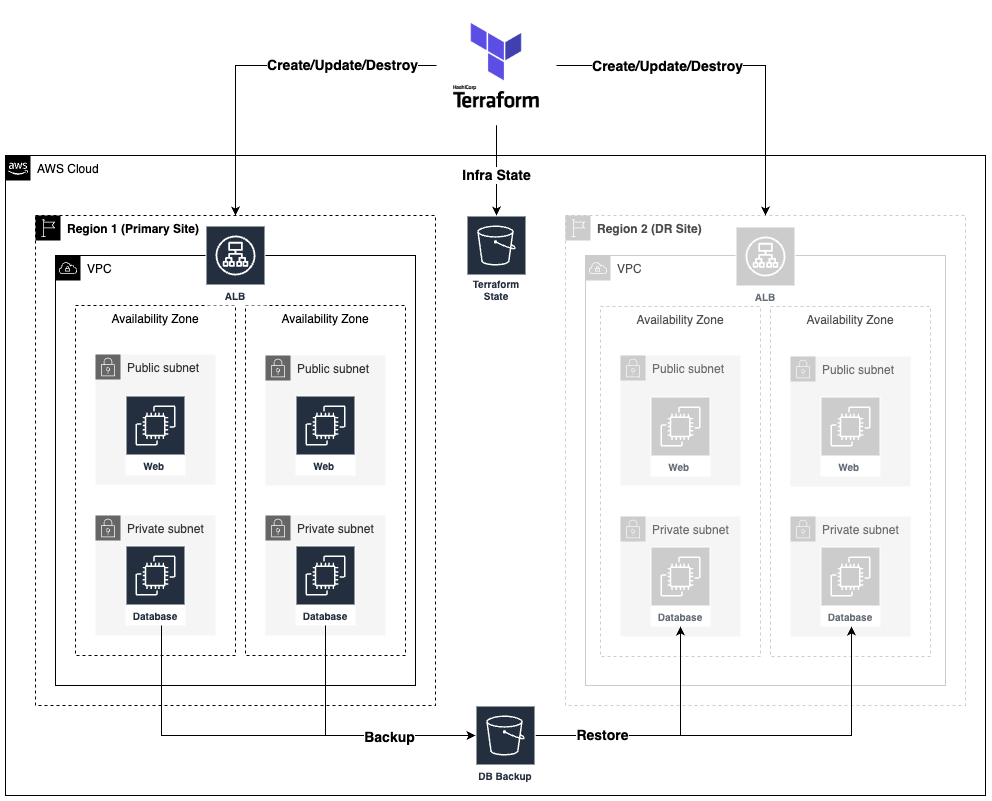Terraform is an open-source infrastructure as code (IaC) tool used for building, changing, and managing infrastructure in a safe and efficient manner. It allows us to define and provision infrastructure resources, such as virtual machines, networks, storage, and more, using a declarative configuration language.
As cloud migration becomes increasingly prevalent, tools like Terraform are gaining popularity for their ability to efficiently manage infrastructure. Terraform's State Management capability is particularly advantageous, as it allows for the easy tracking and modification of infrastructure resources. However, when it comes to disaster recovery, simply managing the infrastructure is not enough. That's where the combination of Terraform and a backup strategy comes into play. By using Terraform to replicate the state of a production environment to a disaster recovery site, businesses can ensure that their infrastructure remains intact in the event of a disaster. Here's a visual representation of how this implementation can be achieved.
This approach relies on the codification of infrastructure and application configuration. The technical solution implemented here uses Terraform for the infrastructure codification and AMIs generated by Packer and Ansible for the application configuration. By following this technical solution, we are supporting the concept of immutable infrastructure for the stateless components.
Terraform is then responsible for managing the infrastructure by deploying the desired state to the primary region and maintaining the latest state by persisting it in an S3 bucket.
Regular database backups are also persisted in an S3 bucket, so them can be available for other regions. We usually consider this to deal with the replication of stateful components for a "backup and restore" recovery strategy.
If the primary region becomes unavailable, we can then use Terraform to deploy the infrastructure to the DR region based on the latest state and database data can be recovered from S3 buckets.



